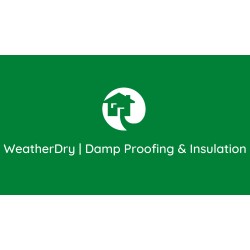Damp Proofing in Coalville
Filter your search
Post your job FREE and let trades come to you
Save time by filling out our simple job post form today and your job will be sent to trades in your area so you can sit back, relax and wait for available trades to contact you.
Post your job FREESearch Damp Proofing in places nearby
Understanding Damp Proofing in Coalville
Damp proofing is an essential process for maintaining the structural integrity and comfort of buildings, especially in areas like Coalville, where the climate can contribute to moisture issues. This article delves into the various aspects of damp proofing, offering insights into its importance, methods, and benefits. Whether you're a homeowner or a professional in the construction industry, understanding damp proofing can help you make informed decisions about protecting your property.
The Importance of Damp Proofing
Damp proofing is crucial for preventing moisture from penetrating the walls and floors of a building. In Coalville, where rainfall can be frequent, damp proofing helps to protect buildings from water ingress, which can lead to structural damage, mould growth, and health issues. By implementing effective damp proofing measures, you can ensure the longevity and safety of your property.
Preventing Structural Damage
Moisture can weaken the structural components of a building, leading to issues such as wood rot, rusting of metal elements, and deterioration of masonry. Damp proofing acts as a barrier, preventing water from seeping into these materials and causing damage over time.
Health Benefits
Excess moisture in a building can lead to the growth of mould and mildew, which can have adverse effects on indoor air quality and health. Damp proofing helps to maintain a dry environment, reducing the risk of respiratory issues and allergies associated with mould exposure.
Common Causes of Damp in Coalville
Understanding the causes of damp is the first step in addressing the issue. In Coalville, several factors can contribute to damp problems in buildings.
Climate and Weather Conditions
Coalville experiences a temperate maritime climate, characterised by moderate to heavy rainfall throughout the year. This consistent exposure to moisture increases the likelihood of damp issues in buildings without proper protection.
Poor Drainage Systems
Inadequate drainage systems can lead to water pooling around the foundation of a building, increasing the risk of water ingress. Ensuring that gutters, downspouts, and drainage systems are functioning correctly is vital for preventing damp.
Building Design and Materials
Some building designs and materials are more susceptible to damp. For instance, older buildings with solid walls and no cavity can be more prone to moisture penetration. Identifying these vulnerabilities can help in choosing the right damp proofing solutions.
Methods of Damp Proofing
There are several methods of damp proofing, each suited to different types of buildings and levels of moisture exposure. Here, we explore some of the most common techniques used in Coalville.
Chemical Damp Proof Courses (DPC)
Chemical DPC involves injecting a water-repellent solution into the walls to create a barrier against moisture. This method is often used in existing buildings where traditional DPC is absent or has failed.
Physical Damp Proof Courses
A physical DPC is a layer of waterproof material, such as plastic or bitumen, installed in the walls during construction. It acts as a barrier to prevent moisture from rising through capillary action.
Waterproof Membranes
Waterproof membranes are sheets of material applied to walls or floors to prevent water ingress. They are particularly useful in basements or areas below ground level, where moisture pressure is higher.
External Waterproofing
External waterproofing involves applying a protective coating to the outside of a building. This method is effective in preventing rainwater from penetrating the exterior walls.
Choosing the Right Damp Proofing Solution
Selecting the appropriate damp proofing method depends on several factors, including the type of building, the severity of the damp problem, and budget considerations.
Assessing the Severity of Damp
A thorough inspection of the property can help determine the extent of the damp problem. This assessment should consider visible signs of damp, such as peeling paint, mould growth, and musty odours.
Consulting with Professionals
Engaging with damp proofing specialists can provide valuable insights into the most effective solutions for your specific situation. Professionals can offer tailored advice and ensure that the chosen method is implemented correctly.
Budget Considerations
While some damp proofing methods may have higher upfront costs, they can offer long-term savings by preventing costly repairs and health issues. It's important to weigh the initial investment against the potential benefits.
Benefits of Damp Proofing
Implementing damp proofing measures offers numerous advantages, from protecting the structural integrity of a building to enhancing the comfort and health of its occupants.
Increased Property Value
A well-maintained property with effective damp proofing is more attractive to potential buyers. It indicates that the building is structurally sound and free from moisture-related issues, which can increase its market value.
Enhanced Comfort
Damp proofing contributes to a more comfortable living environment by eliminating cold, damp areas and reducing the risk of mould growth. This creates a healthier and more pleasant atmosphere for occupants.
Long-Term Cost Savings
By preventing structural damage and health issues, damp proofing can lead to significant cost savings over time. It reduces the need for repairs and maintenance, making it a wise investment for property owners.
Maintaining Damp Proofing Systems
Once damp proofing measures are in place, regular maintenance is essential to ensure their effectiveness and longevity.
Regular Inspections
Conducting routine inspections can help identify any potential issues with the damp proofing system. Look for signs of wear and tear, such as cracks or breaches in the waterproofing material.
Addressing Repairs Promptly
If any damage or deterioration is detected, it's important to address repairs promptly to prevent further issues. Delaying repairs can lead to more extensive damage and higher costs.
Keeping Drainage Systems Clear
Ensuring that gutters, downspouts, and drainage systems are clear of debris is crucial for preventing water from pooling around the building's foundation. Regular cleaning and maintenance can help keep these systems functioning effectively.
Frequently Asked Questions
What is the difference between damp proofing and waterproofing?
Damp proofing is designed to prevent moisture from penetrating walls and floors, while waterproofing provides a more comprehensive barrier against water ingress, often used in areas with high water pressure, such as basements.
How long does a damp proof course last?
The lifespan of a damp proof course can vary depending on the materials used and the conditions of the building. Generally, a well-installed DPC can last for several decades.
Can I damp proof my home myself?
While some DIY damp proofing products are available, it's often best to consult with a professional to ensure the most effective solution is implemented. Professionals have the expertise and equipment to address damp issues thoroughly.
What are the signs of damp in a building?
Common signs of damp include peeling paint or wallpaper, mould growth, musty odours, and discoloured patches on walls or ceilings. If you notice any of these signs, it's important to investigate further.
Is damp proofing covered by insurance?
Insurance coverage for damp proofing can vary depending on the policy and the cause of the damp. It's advisable to check with your insurance provider to understand what is covered.
How much does damp proofing cost?
The cost of damp proofing can vary widely based on the method used, the size of the property, and the severity of the damp problem. Obtaining quotes from multiple professionals can help you find a solution that fits your budget.
In conclusion, damp proofing in Coalville is a vital process for protecting buildings from moisture-related issues. By understanding the causes, methods, and benefits of damp proofing, property owners can make informed decisions to safeguard their investments and ensure a healthy living environment.







